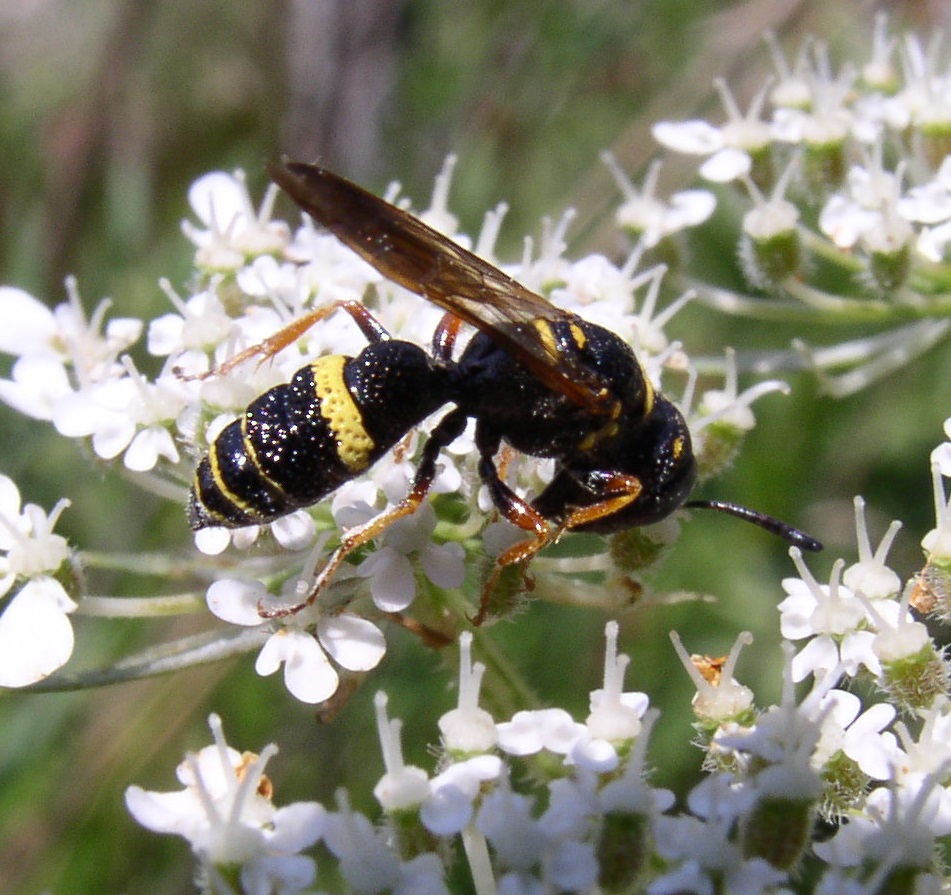The beewolves are a group of ground-nesting, solitary
wasps. They belong to the genus Philantus of the family Sphecidae. The name
"beewolf" refers to their habit of preying on bees (including honeybees).
The bees are killed, taken to the beewolf nest and later eaten by their larvae.
In some regions of Europe and North Africa, beewolves are a threat to commercial beekeeping. A beewolf population of about 3000 can capture 30,000 honeybees daily! In the Dakhla oasis of Egypt, around 24,000 beewolves were exterminated in one season, but they were just as abundant the next year. Needless to say, the beekeepers were not.
As behoves a wasp, beewolves are pests in most other respects as well. In the United States, a large species known as bumblebee-wolf attack and kills bumblebees, an important pollinator. Beewolves also kill beneficial wasps, i.e. wasps that eat grasshoppers, caterpillars and aphids. Should we be crying beewolf, I wonder?
"The Natural History and Behavior of North American Beewolves" is a relatively detailed description of 34 North American species. A short chapter on the European beewolf is also included. Male behaviour, nesting behaviour, mating, provisioning and natural enemies are all covered. Beekeepers (and bees) might be happy to learn that even beewolves have enemies, including robberflies, satellite flies and cuckoo wasps. Interestingly, beewolves can tell the difference between bees and bee mimics, and decline to attack the latter. The book never explains why. Too little meat?
This probably isn't a book for the general reader. I mean, beewolves? Please come on. However, it's relatively easy to read and might be of interest to amateur entomologists and, of course, students of the subject. Please note, however, that the book isn't a field guide, but rather a natural history.

No comments:
Post a Comment